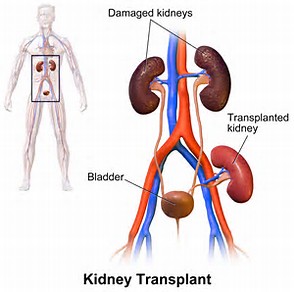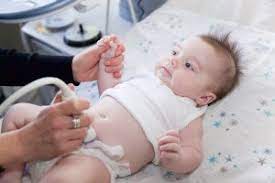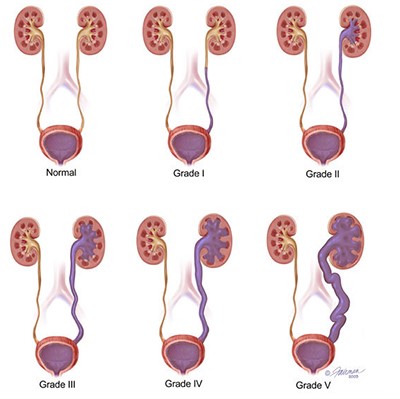To me, it was a logical jump from the legal actions for and about kidneys that I wrote about last week to kidney disease research, and then to the clinical trials involved in this research. Of course, the fact that there’s something in the news about the former president’s trials daily helped a bit, too. That’s why today’s blog is about clinical trials. [Nifty thought process here.]
The American Kidney Fund devotes a rather long page on their site explaining everything you could ever want to know about clinical trials, although they do not list trials. Other sites do, however. The National Kidney Foundation offers this one, as well as others:

“Chronic Kidney Disease-Associated Pruritus (Itchy Skin)
KICK (CARA Therapeutics): The KICK studies are clinical trials testing difelikefalin (a tablet taken by mouth) to see if it helps reduce intensity of itching and the impact that itching has on your quality of life. An intravenous (IV) form of difelikefalin has been approved by the FDA to treat itching associated with CKD in adults who are undergoing dialysis. The KICK studies are testing a tablet form of the medication to see if it reduces itching in CKD patients who are not on dialysis. To learn more and see if you qualify, visit the KICK studies clinical trial page. (También se ofrece en español: la página de ensayos clínicos de los estudios KICK)”
The National Institutes of Health’s National Library of Medicine’s National Center for Biotechnology Information’s ClinicalTrials.gov [What a mouthful!] is the site for clinical trials. You can actually search for specific trials. The site will ask you for the following information:
“Condition/disease
Other terms
Intervention/treatment
Location
Top of Form
Search by address, city, state, or country and select from the dropdown list
Bottom of Form
Study Status
All studies
Recruiting and not yet recruiting studies”
And, as if that is not enough narrowing down your search, they will offer you more filters.
In addition, hospitals conduct clinical trials. The following is just one of those from the Mayo Clinic:
“A Study to Assess Palliative Care Impact on Patients with End-stage Renal Disease Jacksonville, FL
The purpose of this study is to evaluate the impact of palliative care consultations on quality of life and advance care planning in end-stage renal disease patients on hemodialysis, evaluate hemodialysis patients’ and caregivers’ satisfaction with palliative care consultations, and to compare quality of life and advance directive completion in dialysis patients who have and have not received palliative care consultations.”

Let’s not forget that pharmaceutical companies also operate clinical trials. If you remember [and even if you don’t, hehe], I had pancreatic cancer. I’m still on a thirty year trial for one of the chemotherapy drugs that was used to save my life. I firmly believe in clinical trials and was actually part of six of seven of them during my cancer dance. Here’s comes a shameless plug. You can read about them in Cancer Dancer. Ahem, it had been number one in chemotherapy for a while. Anyway, the following trial is from Lilly:
“A Study of Tirzepatide (LY3298176) in Participants With Overweight or Obesity and Chronic Kidney Disease With or Without Type 2 Diabetes (TREASURE-CKD)
I8F-MC-GPIG – ClinicalTrials.gov – NCT05536804
We are doing this study to learn more about how tirzepatide may help fight chronic kidney disease in people with obesity with or without type 2 diabetes (T2D).”
Notice you could have also found this trial by going through ClinicalTrials.gov.
But that’s not all [as they used to say on the late night television advertisements]. Obviously, educational institutions also run clinical trials. That is one way to teach. For example, The University of California San Francisco operates the following clinical trial:
“a study on Chronic Kidney Disease, Kidney Disease, Focal Segmental Glomerulosclerosis
Summary
Eligibility
for people ages 18-75 (full criteria)
Location
at San Francisco, California and other locations
Dates
study started March 2022
completion around February 2025
Description
SUMMARY
This study is open to adults with a type of kidney disease called focal segmental glomerulosclerosis (FSGS). The purpose of this study is to find out whether a medicine called BI 764198 improves the health of the kidneys in people with FSGS. Three different doses of BI 764198 are tested in this study.”

Finally, there are the companies that were established to help you find clinical trials. I live in Glendale, Arizona. Healthmatch asks the following questions. They actually ask many more questions, but they were so patient specific that it made no sense to duplicate them here. It only took me 15-20 minutes to answer their questions.
Start by selecting a condition
What’s your ZIP code?
What is your biological sex?
Why only these two? Clinical trial registries filter based on sex assigned at birth. Intersex patients should choose whichever option better aligns with their experience.
What is your date of birth?
What’s your name?
… what’s your email address?
What’s your phone number?
[Than a verification text will be sent to your phone.]Top of Form
Do you have chronic kidney disease (CKD) as diagnosed by a doctor?
CKD is a long-term condition that is characterized by persistent kidney damage or reduced kidney function, and is usually diagnosed with a blood test.
Would you be willing to use contraceptive methods (or continue using your contraception) if required by the clinical study policy?
If you are not of childbearing potential, or not engaging in activities that could result in pregnancy, disregard this question and answer ‘Yes’.
Do you have end-stage kidney disease?
Also known as kidney failure, renal failure, end-stage renal disease or CKD-5 (eGFR < 15)
Based on your current answers, there are no trials for Chronic Kidney Disease (CKD) that match your profile at this time. We’ll email you as new trials open that you may be a match for.”

Will you join me in participating in clinical trials? Just to nudge you, remember they saved my life.
Until next week,
Keep living your life!






































































































































 his army across the
his army across the  A computerized tomography (CT) scan combines a series of X-ray images taken from different angles around your body and uses computer processing to create cross-sectional images (slices) of the bones, blood vessels and soft tissues inside your body. CT scan images provide more-detailed information than plain X-rays do.”
A computerized tomography (CT) scan combines a series of X-ray images taken from different angles around your body and uses computer processing to create cross-sectional images (slices) of the bones, blood vessels and soft tissues inside your body. CT scan images provide more-detailed information than plain X-rays do.” Of course, now we need to know why we shouldn’t be having this contrast material. Radiology Affiliates Imagining at
Of course, now we need to know why we shouldn’t be having this contrast material. Radiology Affiliates Imagining at 

 Why not, you may be asking yourself. Easy answer? I’m allergic to them. Wait just a minute here. What exactly does allergic mean and how will this affect your Chronic Kidney Disease?
Why not, you may be asking yourself. Easy answer? I’m allergic to them. Wait just a minute here. What exactly does allergic mean and how will this affect your Chronic Kidney Disease?
 I’ve satisfied myself that, just as with my food allergies, my sensitivity to lactose, wheat, fructose syrup, and acidic foods will not harm my kidneys. Although, they may cause me to read more food labels than I usually do. Hopefully, you’re satisfied that your food allergies and sensitivities will not harm your kidneys. If you’re still concerned, speak with your nephrologist or renal dietitian.
I’ve satisfied myself that, just as with my food allergies, my sensitivity to lactose, wheat, fructose syrup, and acidic foods will not harm my kidneys. Although, they may cause me to read more food labels than I usually do. Hopefully, you’re satisfied that your food allergies and sensitivities will not harm your kidneys. If you’re still concerned, speak with your nephrologist or renal dietitian.

 “Constipation can be caused by a variety of medications. These medications affect the nerve and muscle activity in the large intestine (colon) and may also bind intestinal liquid. This may result in slowed colonic action (slow and/or difficult passing of stool).”
“Constipation can be caused by a variety of medications. These medications affect the nerve and muscle activity in the large intestine (colon) and may also bind intestinal liquid. This may result in slowed colonic action (slow and/or difficult passing of stool).”
 Here’s hoping those of you in the U.S.A. had a safe and thoughtful July 4th. This is a peculiar year with different kinds of celebration or none at all.
Here’s hoping those of you in the U.S.A. had a safe and thoughtful July 4th. This is a peculiar year with different kinds of celebration or none at all.

 “What is nephrogenic diabetes insipidus?
“What is nephrogenic diabetes insipidus?



